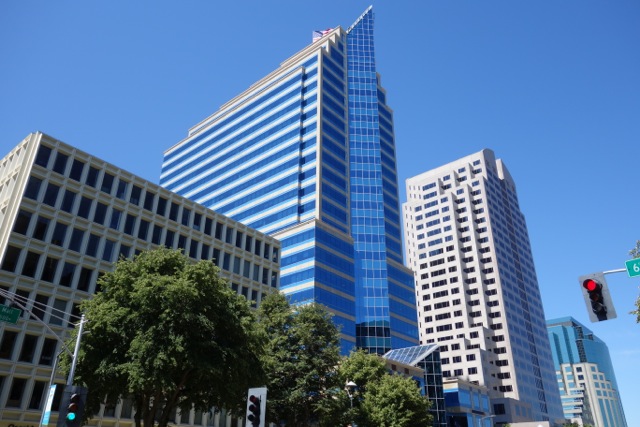
I’ve passed through Sacramento fairly often, but only last weekend did I get a chance to really explore the city — by which, of course, I mean explore the city by bicycle. I’d had my suspicions that its flat, orderly downtown would prove highly bikeable, as indeed it did. And since I rode around on a Saturday and Sunday morning in a town dedicated to state government, traffic certainly never became an issue.

You can’t really get lost in downtown Sacramento. Train tracks border the north side of its ultra-regular grid, and freeways take the other three sides: the 50 to the south, the 80 to the east, and the 5 to the west — particularly unfortunate, that last, since it stands between downtown and the Sacramento River (with the wooden-sidewalked Gold Rush tourist trap of Old Sacramento wedged in between). You can only see so many waterfront freeways before you figure 20th-century urban planning is just punking you.
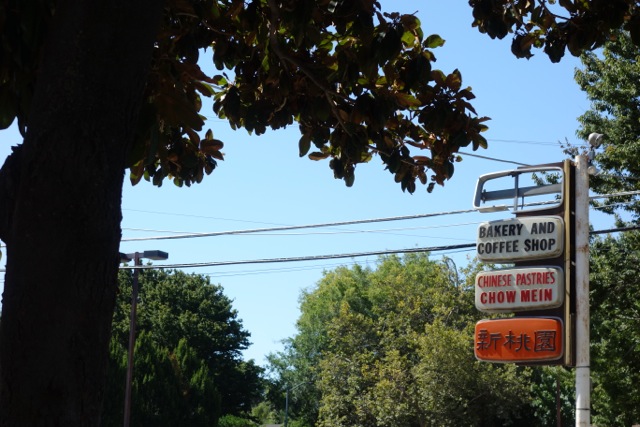
Downtown also seems, alas, to have gone all in on one-way streets, but what they lose urbanistically, they almost make up for orientationally, going from west to east in numerical order and north to south in alphabetical order. Between the east-west streets come smaller stretches called “Alleys”: Fat Alley, Jazz Alley, Quill Alley, Victorian Alley — they, too, adhere strictly to the alphabet.
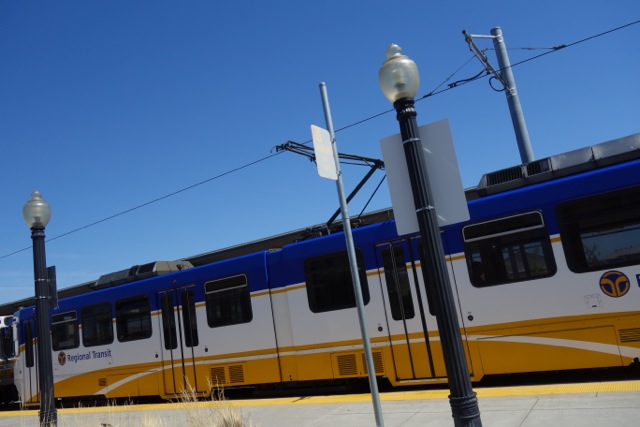
People who’ve lived in Sacramento in decades past tend to regard the city as a pretty dull place, possibly out of comparison to San Francisco a hundred miles to the west. For all I know it may still be, taken in the long term, but I found myself impressed by a number of its urban features. Most visibly, it has the beginnings of a rail system (which actually began operation in the mid-1980s), though it for the most part lacks dedicated lanes and, to look at the map and service schedule, seems mostly commuter-oriented.

That aligns with the description of Sacramento offered by one friend who grew up there as a city where “everyone sort of flees to the suburbs after work.” Perhaps that made me hyper-aware of the signs of nightlife I did see, up to and including a steady stream of pedicabs I watched pass while sitting outside at a wine bar. (One pedicab company offers complete crawls of the city’s wine bars — mental note.) But there I also had a view of the “could do better” column: the clubbing crowd looked demographically bland and rather trashily dressed even by clubbing standards, and street craziness clearly remains a problem: at one point I watched a tie-dyed tweaker chase a much cleaner-cut fellow down the street with a knife.
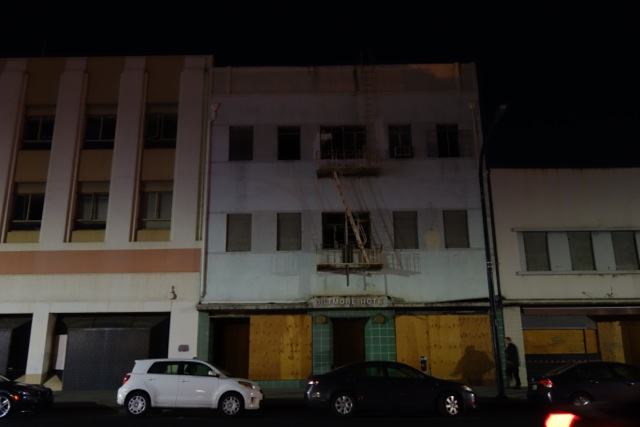
Seated at another sidewalk table for brunch the next morning (downtown Sacramento definitely has brunch covered, if that’s your metric), I watched a similarly afflicted middle-aged man whip off his shirt and start screaming about the government. Bring up this problem in California, and someone will usually reply, bitterly, that it only became a problem because “Reagan closed the mental hospitals” — and leave it at that, as if it precluded all further discussion. I mean, I don’t have a solution myself, but I figure much of it just comes down to outnumbering: if the meth-head or shirtless conspiracy theorist stands alone on the sidewalk, you sense a blighted neighborhood; if he’s surrounded by hundreds of “normal” people, you don’t even notice.
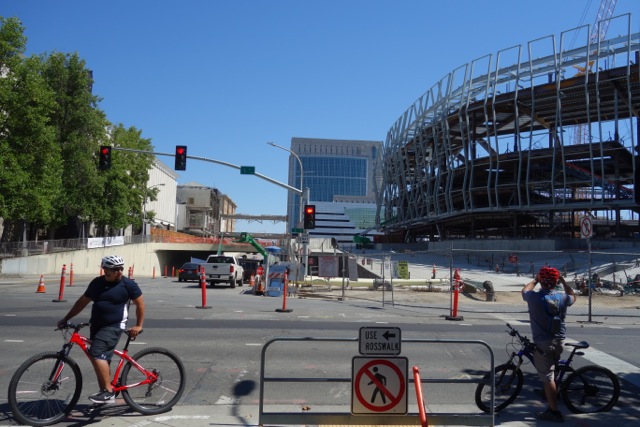
That’s happened to an extent in downtown Los Angeles, seemingly in line with how much new housing has appeared there. Downtown Sacramento has a fair few new-looking residential and mixed-used projects too, and scrolling through the archives of Living in Urban Sac I see plenty more on the way. Even apart from the much-publicized Kings stadium now under construction (which overwrites a 1990s-era mall), the place will probably change more over the next fifteen years than it has over the past 25, when all — all — of the ten tallest buildings on its skyline opened for business. The average newness of its built environment makes downtown Los Angeles look like Uruk by comparison.
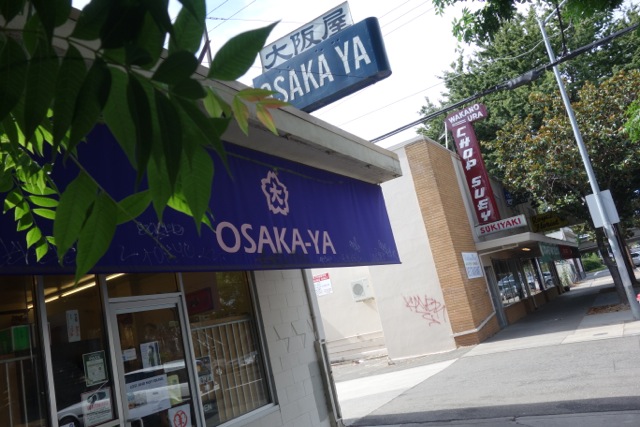
But the past still exists there. Riding through the quiet streets of trees (it turns out that “City of Trees” nickname isn’t just #branding) and modest houses out front of which oldsters read the newspaper and hipsters lounge around on junky lawn furniture, I happened upon the remains of a Japantown. I couldn’t resist stopping in to Osaka-ya, a century-old shop named after my favorite Japanese city, to buy a couple trays of their famous peanut butter mochi (one chunky, one smooth) to take home. According to the Sacramento Bee, the city’s original Japantown succumbed to the bulldozers during a mid-1950s building boom.
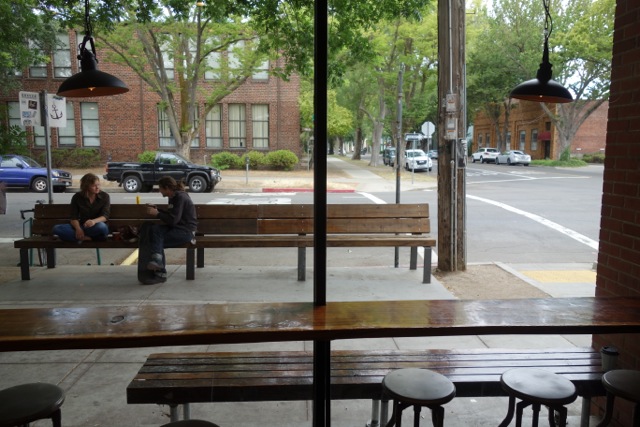
Not far from there stands Insight Coffee Roasters, the first of the company’s three locations in downtown Sacramento. I sought it out on the recommendation of Detroit-based math podcaster Samuel Hansen — who particularly endorses their decaf, but I went early in the morning, so, well, yeah. Sitting with my americano at their front window for an hour or two, I watched a couple of runaway types idle and chat on a bench outside.
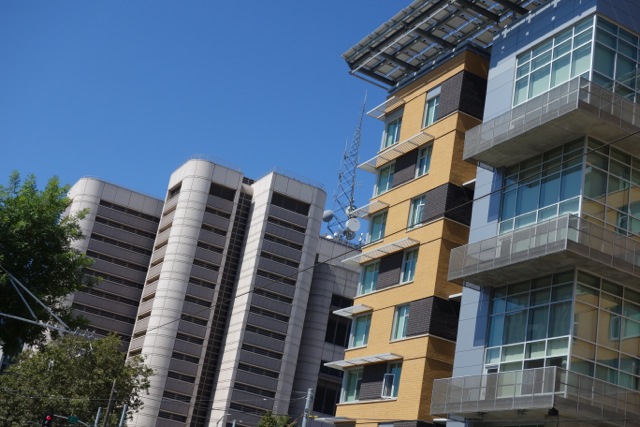
It then occurred to me what other runaway-friendly city Sacramento reminded me of. Coffee, rail (at least some of it), a river (albeit not a well-used one), trees, bikeability (though it could use more infrastructure), a lot of low-rise skyscrapers built not that long ago, not that much diversity: why, it felt like no other place in California so much as it felt like Portland, Oregon. I’ll want to check in again after a decade not just to have a look at the new towers, but to see who’s successfully living the dream of the nineties.